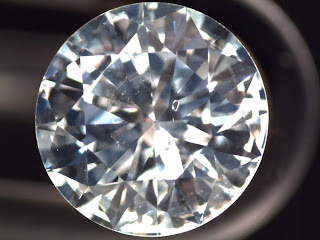The quality and quantity of diamonds mined at the
controversial Chiadzwa diamond fields has been on a decline since 2012,
casting doubts over the possibility of the diamonds sector bailing the
country out of the current quagmire.

Mugabe with the Chinese who are said to be looting diamonds from Marange
While many have held their breath on the hope that the country’s
diamonds would take Zimbabwe out of the woods, the Financial Gazette can
reveal that currently the diamond producers themselves need bailing out
to enable them to acquire the equipment needed to mine the gems
underground.
Despite official claims that the diamond fortunes are still as
glittering as before, the Financial Gazette is reliably informed that
the shine has been waning since last year because the alluvial (surface)
diamonds are fast running out at the Chiadzwa minefields.
Because there is now insignificant diamonds in the alluvial ore, the little that is found is of poor quality than before.
While there is hope that economic grade diamond deposits exist
underground, the companies operating in Chiadzwa need equipment to get
to the gems, which is costly. As such, there is need for them to invest
in state-of-the art equipment for them to extract the gems below the
surface.
The biggest challenge is that some of the companies have no financial
wherewithal to invest in the equipment. The country got the most from
diamonds in 2011 and thereafter production has been on the decline in
terms of quality and quantity, according to the Zimbabwe Mining
Development Corporation (ZMDC), which has an interest in all the
companies operating in Chiadzwa.
In 2011, diamonds were contributing to the fiscus between US$ 23 million to US$33 million a month.
“Currently contributions of such magnitude are not possible, but that
is not to say that it won’t happen again in the future. It can again.
Just that we were mining alluvial diamonds but now we need to mine
conglomerates. We have to go deeper and we need equipment for that.
“We also need to expand and explore further. There is a lot of
untapped land and we need to establish what we have under the ground,”
said Florence Gowora, acting board chairperson for ZMDC.
“Government is currently looking at ways to enable the diamond
companies to acquire capital to expand their operations so that we can
unlock the value we have underground. The future is bright for the
mining sector. We are focusing on how we can grow it (the sector).”
Gowora said while it was nothing unusual for the nation to look at
the diamond sector expectantly, capitalisation challenges were affecting
production while the companies operating in Chiadzwa are also desperate
to plough back what they are earning into their operations.
Mines and Mining Development deputy minister, Fred Moyo was quoted
recently saying that surface ores have exhausted but expressed hope that
the country still has opportunities to explore further for more
alluvial diamonds.
“It is naturally expected in mining that surface ores will exhaust
first, specifically for diamonds. It is important to note that the area
of Chiadzwa is not explored, really. We cannot exhaust deposit of this
nature with five years of operating… the diamond area is not well
explored, meaning we still have more of the surface diamonds,” Moyo
said.
Although reluctant to say much, Marange Diamonds corporate affairs
manager, Muriel Nqwababa, confirmed that surface gems were getting
exhausted.
“Our position is the same as that of the deputy minister,” Nqwababa said.
Compounding the situation are poor prices being fetched on the
international market at a time when Zimbabwe is still trying to gain a
foothold on the mainstream market following years of bickering with the
Kimberly Process.
“We have not been participating in the international space and prices
of our diamonds have also not picked up,” Gowora said, although she
expressed optimism that the recent mission to Zimbabwe by Antwerp would
result in better fortunes for the local diamond industry.
“Antwerp is promising to get better value for Zimbabwe,” she said.
Meanwhile the Minister of Mines and Mining Development, Walter
Chidhakwa has said that government is mulling options for an
international bond to be used to raise money for development of the
country’s mining sector.
Chidakwa is yet to meet with Minister of Finance Patrick Chinamasa to
devise a plan for the bonds within a month’s time. Zimbabwe is billed
as the fourth largest diamond producer in the world.
The nation’s total diamond production from Marange increased from 8,7
million carats in 2011 to 12 million carats last year. This year,
production is expected to rise further reaching over 17 million carats.
But for this to occur, capital and equipment are needed.







 Most synthetic diamonds are mixed with the stars and
melees which are diamonds below seven cents. Out of 10 jewellery
articles sold globally, nine are studded with parcels of stars and
melees processed in Surat, Bhavnagar or Amreli.
Most synthetic diamonds are mixed with the stars and
melees which are diamonds below seven cents. Out of 10 jewellery
articles sold globally, nine are studded with parcels of stars and
melees processed in Surat, Bhavnagar or Amreli. 

+of+DCLA_HR.jpg)




